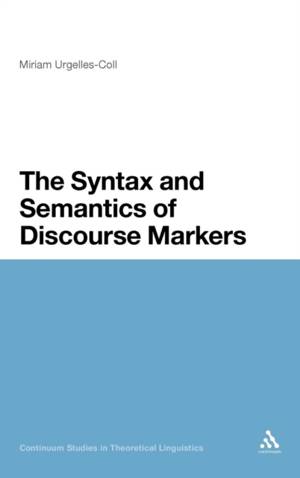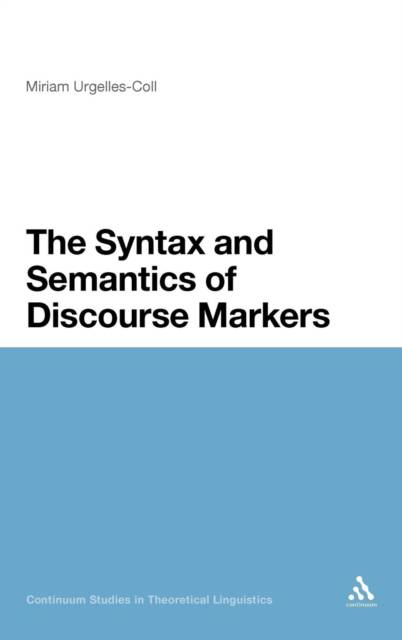
- Afhalen na 1 uur in een winkel met voorraad
- Gratis thuislevering in België vanaf € 30
- Ruim aanbod met 7 miljoen producten
- Afhalen na 1 uur in een winkel met voorraad
- Gratis thuislevering in België vanaf € 30
- Ruim aanbod met 7 miljoen producten
Zoeken
Omschrijving
In this book, Miriam Urgelles-Col examines the syntax and semantics of discourse markers. A discourse marker can loosely be defined as an item such as well or now, coming at the beginning of an utterance and marking a boundary between one part of spoken discourse and the next, signalling the start of a new section of the discourse. They perform important functions in conversation --but defining discourse markers is problematic in itself. The syntactic approach employed in this book to describe discourse markers is Head-Driven Phrase Structure Grammar (HPSG) which is relevant in a theory of discourse because it provides a framework in which all levels of grammar can be integrated. Since discourse markers operate at discourse level, a well developed discourse theory is required - in this case, Segmented Discourse Representation Theory (SDRT) is employed. During the course of the book, Minimal Recourse Semantics is explained as it provides an integration of HPSG and SDRT. The approach described is exemplified with an analysis of 'anyway'. This book offers a detailed overview of research on discourse markers covering different areas of linguistics: from a discourse analysis point of view, to a Relevance Theory perspective going through a computational linguistics approach. Moreover, the book contains a precise summary of HPSG and the recently developed SDRT. It will be of great interest to researchers in semantics, pragmatics, grammar and discourse analysis.
Specificaties
Betrokkenen
- Auteur(s):
- Uitgeverij:
Inhoud
- Aantal bladzijden:
- 192
- Taal:
- Engels
- Reeks:
- Reeksnummer:
- nr. 4
Eigenschappen
- Productcode (EAN):
- 9781441195500
- Verschijningsdatum:
- 22/07/2010
- Uitvoering:
- Hardcover
- Formaat:
- Genaaid
- Afmetingen:
- 240 mm x 161 mm
- Gewicht:
- 444 g

Alleen bij Standaard Boekhandel
+ 780 punten op je klantenkaart van Standaard Boekhandel
Beoordelingen
We publiceren alleen reviews die voldoen aan de voorwaarden voor reviews. Bekijk onze voorwaarden voor reviews.








